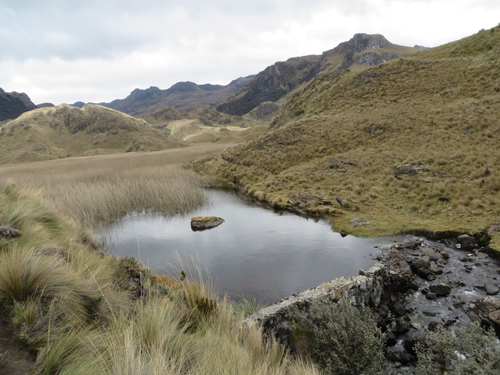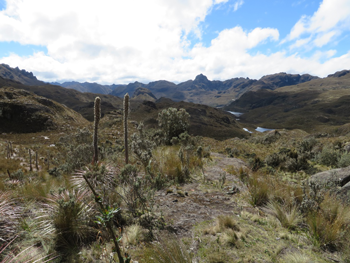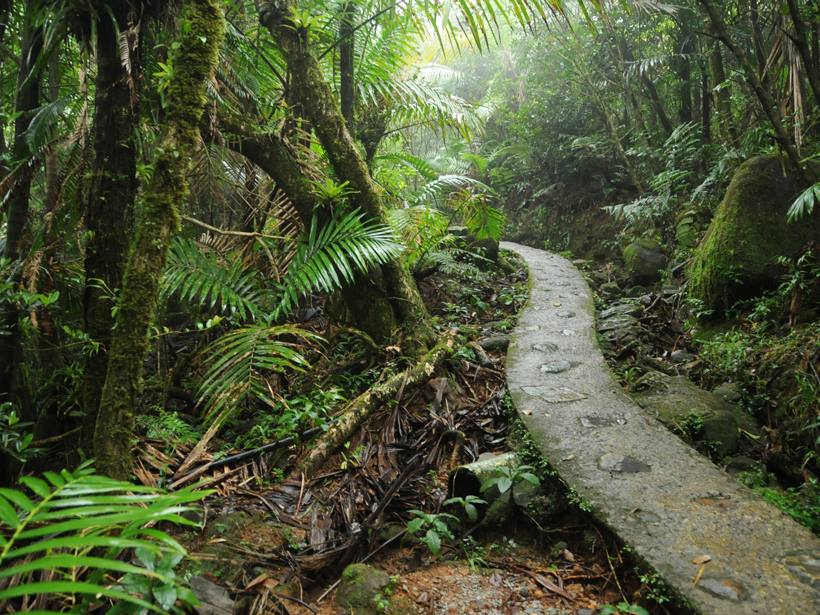Tropical landscapes account for about one fifth of the global land mass. They are the source of most of the Earth’s streamflows, and they influence climates on regional and global scales. But the characteristics that distinguish tropical ecosystems from nontropics—stronger gradients, faster processes, and greater variability, to name a few—also pose unique challenges to ecohydrologic investigations.
The dual processes of climate change and deforestation are driving rapid changes in tropical landscapes.
In addition, the dual processes of climate change and deforestation are driving rapid changes in tropical landscapes. The effects of these changes on water and biogeochemical processes, at a range of scales, are enormous but poorly understood. Scientists do know, for example, that deforestation leads to changes in evapotranspiration, streamflow, and precipitation on local to regional scales and may even influence global climates. Similarly, climate change will likely lead to large-scale and important changes in cloud and precipitation dynamics, feedbacks between the atmosphere and vegetation, and hydrologic cycles in the tropics.
A Need for Greater Understanding
Given the accelerated pace of change, the importance of tropical landscapes, and scientists’ relatively poor understanding of tropical ecohydrology, hydrologists Bradford Wilcox, Jeff McDonnell, Heidi Asbjornsen, David Breshears, and Rolando Celleri organized a Chapman Conference to focus on these critical issues. The June 2016 meeting drew more than 115 academics, research scientists, and early-career professionals from around the world.
The conference was organized around three themes: the relationship between plant physiology and watershed hydrological functioning, scaling issues, and land degradation and rehabilitation and recovery.
The conference fulfilled two main goals, one of which was examining the current understanding of tropical ecohydrology and identifying critical research needs. The other goal was to foster greater interdisciplinary collaboration across the spectrum of ecological and hydrological sciences, in particular between ecophysiologists and catchment hydrologists.

Abundant Opportunities
There are tremendous opportunities to better link ecohydrology with ecophysiology in the tropics, especially with regard to collecting empirical data from the field. Currently, the two areas of research are still worlds apart, and they have limited collaboration.
Conference attendees recommended adopting a strategy that balances long-term data collection with strategically targeted experiments. Participants also agreed that studies comparing watersheds could be of great value. Another recommendation was that researchers in the tropics be especially sensitive to the need for collecting information that is broadly relevant and that can be used to aid in decision-making.
Attendees devoted considerable discussion to the “two–water worlds” hypothesis, which states that tightly bound water in deep soils has little interaction with mobile water in surface soils and streams, and whether this hypothesis is applicable to tropical landscapes. Many researchers argued that this hypothesis holds great promise for better understanding the ecohydrology of the tropics, whereas others maintained that supporting evidence may be an artifact of current sampling techniques. Participants agreed that the topic merits further research.
During breakout meetings, participants challenged each other to develop joint papers synthesizing important and emerging areas in tropical ecohydrology. Discussions identified several potential themes for further development and subsequent publication in a special issue. These themes included issues related to ecosystem disturbance, exotic plant invasions, soil faunal effects on soil hydrological functioning and runoff generation, and optimal data collection strategies.
The poster sessions emerged as a popular feature, with presentations from many early-career scientists, mostly from Latin America. Discussions during this part of the conference were especially lively and stimulating. Another highlight of the conference involved a field excursion to view the University of Cuenca’s research efforts in the Andean Páramo zone, a high-elevation grassland.

A Meeting of the Minds
Arguably, the most important outcome of the conference was the bringing together of so many scientists, especially young scientists, from across the globe and enabling them to forge what will likely be long-lived and productive relationships. As one attendee remarked, “I believe the social value of this meeting will endure as one of its greatest accomplishments.”
About 40 of the early-career scientists attended thanks to support from the National Science Foundation, the U.S. Department of Energy, and the University of Cuenca.
—Bradford P. Wilcox (email: [email protected]), Texas A&M University, College Station; Sampurno Bruijnzeel, King’s College London, UK; and Heidi Asbjornsen, University of New Hampshire, Durham
Citation:
Wilcox, B. P.,Bruijnzeel, S., and Asbjornsen, H. (2016), The pace of change on tropical landscapes, Eos, 97, https://doi.org/10.1029/2016EO063837. Published on 30 December 2016.
Text © 2016. The authors. CC BY-NC-ND 3.0
Except where otherwise noted, images are subject to copyright. Any reuse without express permission from the copyright owner is prohibited.

